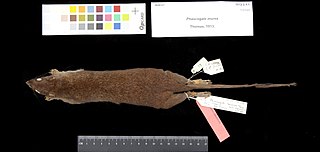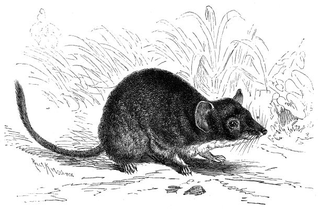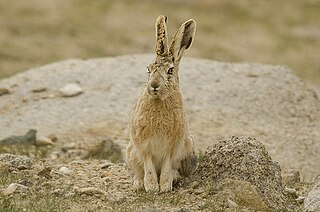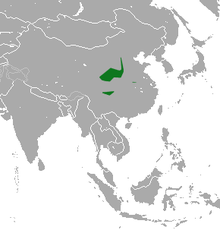
The Amur hedgehog, also called the Manchurian hedgehog, is a hedgehog similar to the European hedgehog in appearance and behaviour, although it is more lightly coloured. It is native to Amur Oblast and Primorye in Russia, Manchuria in China, and the Korean Peninsula. Like other hedgehogs, it uses scent and hearing while looking for prey, and the name "hedgehog" refers to the pig-like grunts it makes as it forages.

The Daurian hedgehog is a solitary small hedgehog. It is listed in the Red book of Russian Federation as a protected species with an unclear status, generally considered to be endangered, although the IUCN lists it as "least concern". It populates the Transbaikal region of Russia and Northern Mongolia. It lives in dens and inhabits both forests and steppes. The steppes consists mainly of grassland plains and scrublands. The Daurian hedgehog actively select scrublands and rocky areas, perhaps for greater cover and concealment from predators. This species of hedgehogs are known to occupy larger home ranges than other hedgehog species. The adult Daurian hedgehog is 15 to 20 centimeters long and weighs up to 1 kilogram. Most live up to six years in nature. Like most hedgehog species in temperate regions, the Daurian hibernates during the winter.

Red-cheeked squirrels are species of squirrels in the genus Dremomys in the subfamily Callosciurinae. The six species which are all found only in Asia are listed as "Least Concern" by the IUCN.

Callosciurus is a genus of squirrels collectively referred to as the "beautiful squirrels". They are found mainly in Southeast Asia, though a few species also occur in Nepal, northeastern India, Bangladesh and southern China. Several of the species have settled on islands. In total, the genus contains 15 species and numerous varieties and subspecies. The genera Glyphotes, Rubrisciurus, and Tamiops have sometimes been included in Callosciurus.

Murexia is a genus of mice-sized dasyure, in the marsupial order Dasyuromorphia. They are found in Papua, Indonesia and Papua New Guinea.

The Phascogalini are a tribe in the family Dasyuridae, comprising seven genera of small marsupials native to Australia and New Guinea.
Chevrier's field mouse is a species of rodent in the family Muridae. It is found only in China.
The Shansei vole is a species of rodent in the family Cricetidae. It is found only in north-central China where its habitat is forests.
The Duke of Bedford's vole is a species of rodent in the family Cricetidae. It is found only in mountainous parts of central China. It is a rare species and the International Union for Conservation of Nature has assessed its conservation status as being "vulnerable".

The shrew gymnure, or shrew hedgehog, is a species of mammal in the family Erinaceidae and is the only extant species in the genus Neotetracus. It is found in China, Myanmar, and Vietnam.

The Yunnan hare is a medium-sized species of mammal in the family Leporidae. It has soft, flat, and long dorsal pelage which is grayish brown or dark gray in color, and whitish ventral pelage. It was considered endemic to China, but its presence was recorded in northern Myanmar in 2000. It is a herbivore, and forages on shrubs and forbs. It is rated as a species of least concern on the International Union for Conservation of Nature Red List of Endangered Species. The Red List of China's Vertebrates has listed the Yunnan hare as near threatened, almost meeting the criteria to be listed as vulnerable.

The woolly hare is a species of mammal in the family Leporidae. It is found in western and central China, northern India, and Nepal, where its typical habitat is montane grassland. It has a wide range and is present in some protected areas but is a generally uncommon species; the International Union for Conservation of Nature has assessed its conservation status as being of "least concern".
Mesechinus is a genus of hedgehogs. It contains four species from East Asia:
The Chinese white-toothed shrew is a species of mammal in the family Soricidae.

The Indochinese shrew is a species of white-toothed shrew native to Southeast Asia. It was first identified in 1922 by Herbert C. Robinson and C. Boden Kloss. The species is often taxonomized as a subspecies Horsfield's shrew, but bears a different range, occurring in Myanmar, Vietnam, and the Yunnan province of China. C. indochinensis is on the smaller end of shrews, with dark brownish gray fur and a long, slender tail.












